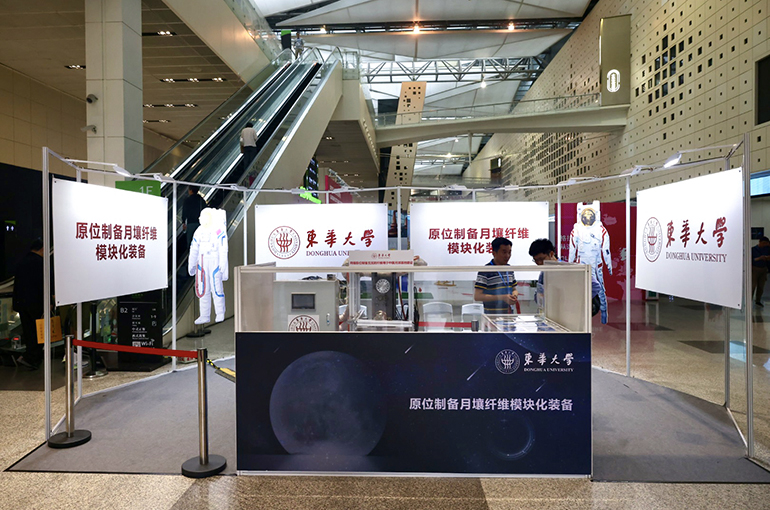 From Lunar Soil Fiber to Dancing Robots: University Innovations Shine at Shanghai Int'l Tech Fair
From Lunar Soil Fiber to Dancing Robots: University Innovations Shine at Shanghai Int'l Tech Fair(Yicai) June 12 -- Nearly 40 universities from the Yangtze River Delta region are showcasing close to 260 innovations at the 11th China Shanghai International Technology Fair (CSITF), underscoring the growing technological momentum in China’s higher education sector.
First introduced in 2014, the university exhibition zone has expanded this year to include institutions such as Nanjing University of Posts and Telecommunications, Nanjing Normal University, and Ningbo University, Yicai learned during the three-day technology fair that is scheduled to conclude tomorrow.
Covering an area of 1,000 square meters, the academic zone features a wide array of projects, ranging from electric vehicles and semiconductors to infrastructure and medical education.
Among the standout innovations is Donghua University’s Lunar Soil In-situ Basalt Fiber Modular Equipment, developed by the State Key Laboratory of Advanced Fiber Materials. The team created a lunar soil-like composite in the laboratory, melting it at temperatures between 1,400 and 1,500 degrees Celsius and using vacuum traction technology to produce ultrafine fibers measuring just 10 to 20 microns in diameter -- around one-fifth to one-sixth the thickness of a human hair.
"This technology could enable lunar base construction in the future by locally sourcing materials to produce high-strength fibers," explained Wang Qingwei, a doctoral advisor and researcher at the lab.
In contrast to the serious tone of space science, the event also offered playful interaction with the Meteer robot -- a 28-centimeter-tall AI-powered dancing toy developed by Nanjing University’s Institute of Artificial Intelligence. Weighing less than two kilograms, the robot can generate unique dance routines, supports over 30 interactive expressions, and features multilingual voice interaction capabilities powered by OpenAI’s large language model ChatGPT, including both Chinese and English. Currently priced at USD239 on Amazon in the United States, the product is now entering the Chinese market.
Additional exhibits included Shanghai Jiao Tong University’s innovative platform that enables layered 3D visualizations for medical education without the need for 3D glasses. Shanghai Maritime University showcased a multifunctional coating that combines broadband stealth absorption with long-term anti-corrosion and bio-antifouling properties. Ningbo University introduced a portable mass spectrometer for real-time chemical analysis in various environments.
Meanwhile, Shanghai University’s School of Mechatronic Engineering and Automation presented the Sound Monster, a customizable AI toy developed by a student team led by Ouyang Wangzi. The toy reacts to audio stimuli with coordinated movements, lights, and sounds. “We reached breakeven in May and recently secured a CNY5 million (USD695,100) order from a listed company,” Ouyang said.
A representative from the Center for Science and Technology Development of Shanghai Universities told Yicai that the university zone at CSITF plays a crucial role in raising the professional standard of exhibits, while also accelerating the commercialization of academic research.
Future editions of the fair will feature more targeted technology transfer services through project roadshows and dedicated matchmaking events in the Yangtze River Delta, the representative added.
Editor: Emmi Laine